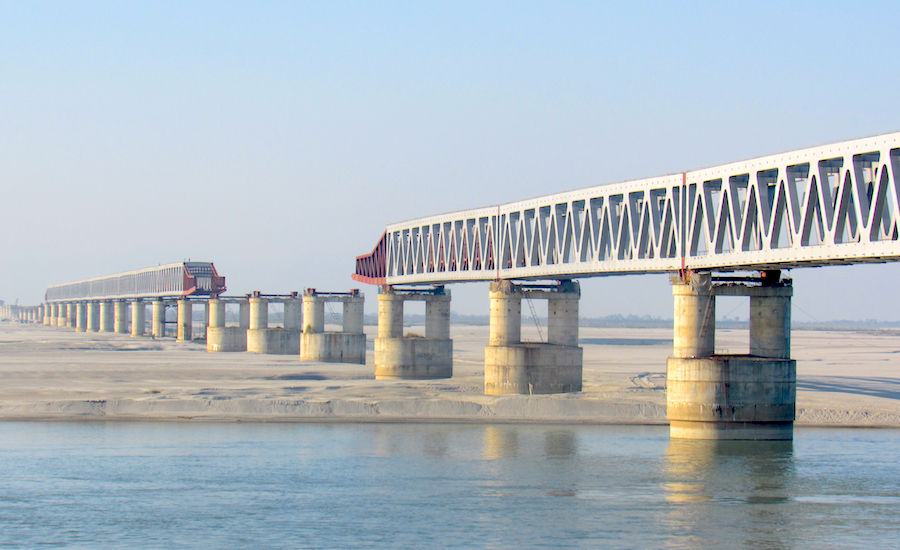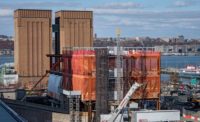India has much infrastructure to build but faces a daunting challenge seen in many developing parts of the world: remote construction.
Firms in the Indian construction market, upbeat about the 18-month-old Narendra Modi government, have their hopes pinned on a budget that seeks to build infrastructure and connectivity in remote areas of the country. Projects expected to receive rural spending include roads and irrigation.
The government is working on policies to attract significant investor interest and has plans to develop 66,117 kilometers of roads under different programs, such as the National Highways Development Project, a part of the Special Accelerated Road Development Program, in the remote northeast.
It has set an objective of building, starting in 2016, 30 km of road a day. India likely will approach the Asian Infrastructure Development Bank to obtain funds for some of these projects. Last month, India was elected to the board of directors of the China-sponsored bank.
Still, despite its large road network, vast areas of more than 10 Indian states, each with varying terrains, lack access to all-weather roads, creating logistical question marks for planning new construction. Lack of infrastructure is not the only challenge in remote building. Each geographical location faces unique challenges, from unavailability of quality labor, high altitude, dense forests and desert terrain to security risks posed by local rebels, often leading to low quality, higher costs and delays in completion of projects.
In addition, depending on the location, work is seasonal, which can have an impact on megaprojects, creating a need for innovative ideas and techniques. Non-construction-related challenges include legal issues, government regulations, environmental concerns and sociopolitical pressures.
“A major challenge is geographical isolation in many construction projects in India, of which terrain is a component,” Devendra Yadav, CEO of Egis Road Operation India, tells ENR. Contracts for such projects generally are worked out to account for escalation of costs and risks, delays, and political and social activity in the region.
For instance, a joint venture of state-run Orissa Mining Corp. and Vedanta Aluminum Ltd. to extract bauxite from the Niyamgiri hills, spread over 250 sq km, was scrapped because protesting villagers said the project threatened their religious rights. South Korean steel maker Posco’s $12-billion project to set up, in 2005, a steel plant in the state faced problems in getting mining leases, environment and forest clearances, and acquiring land.
Further, the success of a megaproject centers on building a skilled and sustained talent base, experts say. India’s construction sector, barring a handful of large companies, mainly unorganized, operates on a subcontracting model. A large proportion of the workforce in remote areas is contractual, with a limited specialized skill base.
People and Skills
Attracting trained staff to remote projects is another challenge.
“This is a reason large companies deploy their own local, regional players,” says Yadav.
Often, large contractors apportion work packages to local subcontractors, one company official says. He adds that, in remote areas, political and tribal leaders carry a lot of decision-making power, which can affect quality of work. “Most government bids are based on the lowest bid, [which] makes it unprofitable for a company following best business practices.”
Another major challenge faced by contractors working on megaprojects in remote areas is transport of heavy equipment on bad roads or, in some cases, no roads at all. Consequences include major risk of damage and service issues.
In the Himalayas, geology and geography remain the biggest challenges. While working on the Pir Panjal tunnel, the second largest in Asia, Hindustan Construction Co. Ltd. (HCCL) expected loose soil in certain sections and thus deployed sophisticated roadheaders, or large crawler excavators with specialized milling drums—instead of buckets—that can chew through dense rock.
“Reaching the site areas requires planning. We do not just resort to Google Maps,” says Arun Karambelkar, president and CEO at HCC. He adds, “In hills, often, there are overhanging boulders, and bridges that cannot hold the weight. [The spans] have to be strengthened, as the height and weight of equipment pose an issue. We have to specially manufacture the equipment so that it can be disassembled, keeping size and weight in view.”
Contractors employ specialized trailers, with escorts walking along on either side. To enable to a trailer to pass through lower-elevation tunnels, they sometimes deflate tires to lower the height. HCC used the New Austrian Tunneling Method (NATM), often referred to as the "design as you go" approach. In NATM, the complete support system is installed subsequent to excavation, and the surrounding soil and rock mass of a tunnel is integrated into the overall support structure.
Extreme access technologies, such as heavy-lift helicopters and airships, are under development or being deployed to help solve this extreme-access problem. Also in the Pir Panjal range, Erickson will undertake its first project in India in partnership with Sterlite Grid to install 160 power-transmission towers, using its S64 Aircrane high-precision aerial lift—the first time transmission lines will be constructed using such an aircraft in India.
The 5-km Bogibeel bridge on the Brahmaputra River, in upper Assam, is India’s longest rail-to-road bridge and the first to be completely steel-welded. Scheduled to be commissioned in June 2017, it is being built by HCC in a joint venture with DSD Brouckenbau GmbH, Germany, and VNR Infrastructures Ltd.
With 42 concrete columns and piers supporting 39 steel spans of 125 meters and two spans of 32.75 m, each weighing 1,700 tonnes, the equivalent mass of the steelwork works out to that of more than 107 Airbus A380s, which have a maximum takeoff weight of more than 650 tonnes.
Three fabrication workshops have been set up on site. The aim is to complete one truss every seven days. Seventy thousand metric tonnes of steel—equivalent to approximately 10 Eiffel Towers—will be used for the superstructure of the project. The contractor hired 300 experienced welders and trained another 450 on site. To accommodate poor geological conditions and sloping terrain, the team altered the design.
For example, HCC’s 126-MW hydroelectric project in Dagachhu, in a remote, forested area of Bhutan, presented the contractor with mobilization challenges due to potential landslides. The contractor dismantled and transported heavy equipment to the site in parts.
Challenges in Ladakh, where temperatures drop below -30° C when HCC was building two power plants, were immense. Roads were blocked by snow for months, preventing transport of food, equipment and people.
“There have been times when we faced flash floods, and villages were washed away,” said Karambelkar.





